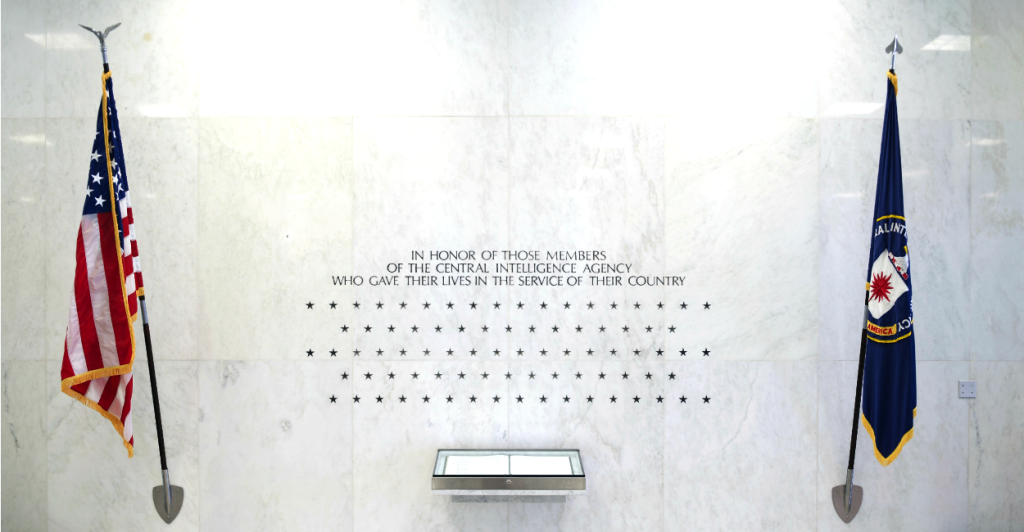As we celebrate Veterans Day honoring those who served our country in time of conflict, let us not overlook those who fought in the longest war of the 20th century—the Cold War.
Many of these brave men and women combated Communism far from home and in secret. From the jungles of Africa to the mountains of Central Asia, they served on every continent and in every climate in defense of freedom. Only years after the collapse of the Soviet Empire did some of their stories become public—many are still classified.
A True American Hero
We mean heroes like Douglas Mackiernan. A physics major from MIT and fluent in four languages, he joined the army in 1942 as a cryptographer and was sent to Urumqi in Western China, where he worked as a meteorologist. Because of his wide range of skills, he was recruited by U.S. intelligence in 1946. When the CIA was created in 1947, Mackiernan was hired as a field operative.
Urumqi was of immense interest to the CIA. The Soviets had diplomats and soldiers there, the region held reserves of uranium, and it was near the remote Soviet republics of Kazakhstan and Kyrgyzstan—likely locales for nuclear tests. It was Mackiernan’s mission to track the Soviet development of the nuclear bomb, and, as the only U.S. operative for thousands of miles in any direction, the task was his alone. His story is dramatically told in two compelling works, “The Book of Honor” by Ted Gup and “Into Tibet: The CIA’s First Atomic Spy and His Secret Expedition to Lhasa” by Thomas Laird.
Mackiernan connected with local leaders, monitored Soviet and Chinese uranium mines, and tracked Communist activities. Most importantly, however, Mackiernan set up equipment that could pinpoint the location, bomb size, and date of an atomic explosion with accuracy. When Joe I, the first Soviet bomb, was dropped in August 1949, Mackiernan’s sonic intelligence was crucial in assessing Soviet nuclear capabilities.
When Chinese communists approached Urumqi, Mackiernan asked to stay behind to finish his mission. But the CIA ordered him to move out and find safety. Realizing he would be easily spotted, Mackiernan drew up an audacious plan.
He and his party would escape Western China on a 1,200 mile journey, under the cover of night, through Tibet and into India, from which they could finally fly home. They set out and traveled on foot, horse, and camelback, through deserts, across plateaus, and over the Himalayas.
The journey was nearly a death sentence. “Country absolutely barren,” wrote Mackiernan in his travel log. “[M]any skeletons of men, horses and camels.”
Even today, Google Maps can’t come up with a land route from Urumqi to New Delhi.
They went days without food or water, walked through 60-mph winds, in temperatures of 30 below, and at elevations of 16,000 feet and higher—all while navigating by the stars, foraging for food, dodging communist detection, and dealing with nomads who had never seen foreigners before.
After overcoming so much, Mackiernan’s trip ended tragically. While disguised as a Kazakh crossing into Tibet, and after several months and a thousand miles, he was shot dead by Tibetan border guards. The survivors were escorted to a nearby town. En route, they encountered a Tibetan government official from Lhasa carrying a message from the Dalai Lama providing safe passage for Mackiernan and his group.
Douglas Mackiernan was the first CIA agent killed during the Cold War. Tragic as his fate was, we know he was ready to make the ultimate sacrifice for his country. Yet we know relatively little about him and his mission. It took the CIA fifty-six years to acknowledge he was an agent, and most of the mission remains classified.
Heroes We Should Know, and Not Forget
Americans should know more about Mackiernan and the hundreds of other unknown warriors who died during the Cold War.
An important step toward increasing public attention and appreciation for their service would be the construction of a Washington memorial in Washington, D.C., for these unheralded men and women.
In so acting, we would properly honor these heroes and educate this generation, and those to come, that ideas like duty, honor, and country matter.
The essential fact about the Cold War is that it was a conflict between freedom and tyranny, between the rule of law and the gun, between good and evil. Yes, there were shooting wars, but they were the visible parts of an ideological battle.
The West stood for the individual and limited government, the Soviets for omnipotent state powers and pseudo-scientific Marxist doctrines promising utopia.
Communism tried to erase liberty through single-party rule, the abolition of private property and free markets, censorship, and the elimination of religion. But it failed because of the efforts of brave men like Douglas Mackiernan and because communism is so contrary to human nature.
Just as men and women require memory of the past to retain their identity and values, so too does a culture require a collective memory. Cultural memory preserves shared values. We cannot forget, without ceasing to be ourselves, that individual liberty is a core idea of Western civilization and one of its greatest gifts to the world.
The comfort, prosperity, and peace we now enjoy make it easy to take them for granted—especially for the rising generation.
A Washington memorial for the heroes of the Cold War, like Douglas Mackiernan, would preserve the memory of those who combated Communism in secret and of the precious gift of liberty for which they fought.
On this Veterans Day, let us pause, then, and praise those who died on all the known and unknown battlefields that we might live in peace and freedom.
This article has been modified.
